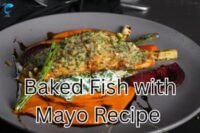Top 10 Best Freshwater Schooling Fish for 2025
Published: 22 Apr 2025
Schooling fish create mesmerizing, dynamic displays in freshwater aquariums as they move in coordinated patterns, adding visual interest and natural behaviour to your underwater environment. For 2025, the trends in aquarium keeping are leaning toward sustainable practices, unique species selection, and creating balanced aquatic ecosystems.
This comprehensive guide highlights the top 10 best freshwater schooling fish trending for 2025, considering factors like appearance, care requirements, compatibility, and sustainability. Whether planning a nano tank or a larger community aquarium, these selections will help create a vibrant, harmonious underwater world.
Why Choose Schooling Fish?
Schooling fish offer several benefits for aquarium enthusiasts:
- They create striking visual displays when kept in proper groups
- Their coordinated swimming patterns add dynamic movement to the aquarium
- Many species help maintain tank cleanliness by consuming algae or debris
- They typically exhibit peaceful behaviour, making them ideal for community tanks
- Their natural grouping behaviour demonstrates healthy, stress-free fish
Top 10 Best Freshwater Schooling Fish for Your Aquarium
Below, we’ve rounded up some of the best freshwater schooling fish, considering factors like Ease of care, colouration, and compatibility with other species. Let’s dive in!
1. Green Neon Tetra (Paracheirodon simulans)

| Key Features |
|---|
|
Water Parameters
- Temperature: 73-80°F (23-27°C)
- pH: 5.5-7.0
- Hardness: Soft to medium
Diet
Omnivorous; quality flake food, frozen cyclops, baby brine shrimp, daphnia
Why They’re Trending for 2025
Green Neon Tetras are gaining popularity as a more vibrant alternative to the classic Neon Tetra. Their brilliant blue-green iridescent stripe contrasts beautifully against planted aquariums, creating a stunning visual display. Their small size makes them perfect for the growing nano tank trend, while their peaceful nature allows compatibility with various community setups. They’re ideal for planted aquascapes, where they create breathtaking visual displays when kept in larger schools.
Compatibility
Green Neon Tetras are peaceful community fish that pair well with other small, non-aggressive species like rasboras, small corydoras, and peaceful dwarf cichlids, ensuring a harmonious and stress-free tank environment.
Tank Setup
Plant heavily planted tanks with subdued lighting and a darker substrate to enhance their colours. Include driftwood and leaf litter to create the slightly acidic water they prefer.
Sustainability Note: Now mostly captive-bred, Green Neon Tetras are a more sustainable choice than their wild-caught counterparts, allowing you to enjoy their beauty with a clear conscience.
2. Chili Rasbora (Boraras brigittae)

| Key Features |
|---|
|
Water Parameters
- Temperature: 72-82°F (22-28°C)
- pH: 6.0-7.5
- Hardness: Soft to medium
Diet
Omnivorous; crushed flakes, small fry food, micro pellets, frozen and live foods (brine shrimp, micro worms, daphnia)
Why They’re Trending for 2025
These brilliantly red, tiny fish are perfect for the growing nano aquarium trend. Their vibrant colour creates a striking contrast against green aquatic plants, making them especially popular for heavily planted tanks and aquascapes. As aquarists increasingly focus on creating natural-looking environments, these micro-schoolers offer a perfect blend of visual impact and small bioload.
Compatibility
Excellent with other peaceful nano fish, shrimp, and small peaceful bottom dwellers.
Tank Setup
Densely planted tank with floating plants to diffuse light. Dark substrate enhances their vibrant red colouration. Provide plenty of hiding spots with plants like Java moss, driftwood, and leaf litter to create a blackwater-style environment mimicking their natural habitat.
Sustainability Note: Increasing availability through captive breeding programs has reduced wild collection pressure on this species.
3. Celestial Pearl Danio (Danio margaritatus)

| Key Features |
|---|
|
Water Parameters
- Temperature: 72-76°F (22-24°C)
- pH: 6.5-7.5
- Hardness: Soft to medium
Diet
Omnivorous; crushed flakes, small pellets, frozen cyclops, daphnia, baby brine shrimp
Why They’re Trending for 2025
These jewel-like fish, with their deep blue bodies adorned with pearl-like spots and vibrant orange-red fins, are becoming increasingly popular for their unique appearance. They offer the perfect combination of stunning colouration and peaceful temperament for planted nano tanks. As specialized breeding programs improve, they’re becoming more readily available and affordable than in previous years.
Compatibility
Best with other small, peaceful species. Avoid keeping with large or aggressive fish.
Tank Setup
This is a well-planted aquarium with open swimming areas and densely planted zones. Moss, driftwood, and rocks are included to create hiding places and territories. Slightly cooler water than most tropical fish is preferred.
Sustainability Note: Originally a wild-caught species, causing concern for its native populations, it is now increasingly available as captive-bred, making it a more ethical choice for 2025.
4. Pygmy Corydoras (Corydoras pygmaeus)

| Key Features |
|---|
|
Water Parameters
- Temperature: 72-79°F (22-26°C)
- pH: 6.4-7.4
- Hardness: Soft to medium
Diet
Omnivorous; sinking wafers, high-quality pellets, frozen and live foods (bloodworms, daphnia, tubifex)
Why They’re Trending for 2025
Unlike most corydoras species that stay primarily on the bottom, Pygmy Corys frequently venture into the middle water column, creating a unique display as they school in multiple dimensions within the tank. Their tiny size makes them perfect for nano aquariums, and their adaptability to various water conditions makes them suitable for beginners and experienced aquarists alike.
Compatibility
Peaceful community fish that work well with other small species like tetras, rasboras, and peaceful dwarf cichlids.
Tank Setup
A soft, sandy substrate protects their sensitive barbels. Plants, driftwood, and other decorations create hiding places and visual barriers. They appreciate areas with moderate water flow alternating with calmer zones.
Sustainability Note: Widely captive-bred, making them a sustainable choice for aquarium keepers concerned about conservation.
5. Ember Tetra (Hyphessobrycon Amanda)
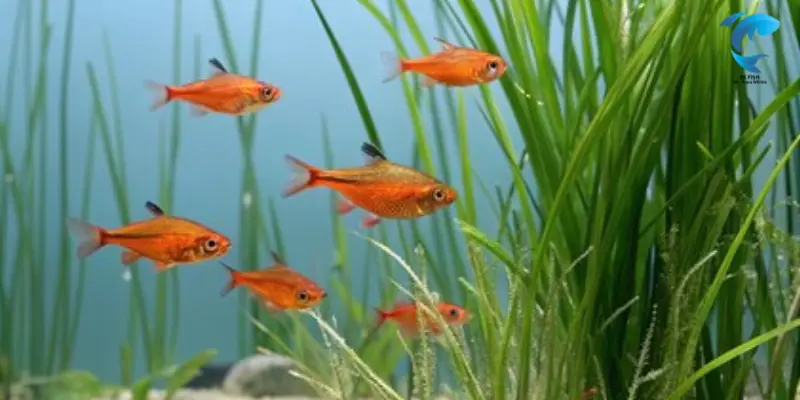
| Key Features |
|---|
|
Water Parameters
- Temperature: 73-84°F (23-29°C)
- pH: 5.5-7.0
- Hardness: Soft to medium
Diet
Omnivorous; quality flake food, micro pellets, frozen and live foods (daphnia, baby brine shrimp)
Why They’re Trending for 2025
Their vibrant orange-red colouration creates a striking “ember” effect against green plants and dark substrate. Ember Tetras are gaining popularity in 2025 as aquarists seek species that provide a high visual impact while remaining small and peaceful. Their hardiness makes them suitable for beginners, while their bright colours appeal to aquascapes and experienced hobbyists.
Compatibility
Excellent community fish that mix well with other peaceful species of similar size.
Tank Setup
Planted tank with open swimming spaces and darker substrate to make their colours pop. Floating plants to diffuse light and create a natural South American biotope are recommended.
Sustainability Note: Widely captive-bred, reducing pressure on wild populations.
6. Harlequin Rasbora (Trigonostigma heteromorpha)

| Key Features |
|---|
|
Water Parameters
- Temperature: 73-80°F (23-27°C)
- pH: 6.0-7.5
- Hardness: Soft to medium
Diet
Omnivorous; flake food, small pellets, frozen and live foods (bloodworms, brine shrimp)
Why They’re Trending for 2025
Harlequin Rasboras offer the perfect balance of striking appearance, ease of care, and peaceful temperament. Their distinctive triangular black marking against an orange-copper body creates a unique visual pattern when schooling. They’re gaining popularity in 2025 as aquarists seek hardy, beginner-friendly fish that still offer visual interest and natural schooling behaviour.
Compatibility
Excellent community fish that work well with tetras, other rasboras, dwarf cichlids, and bottom-dwelling species.
Tank Setup
This is a well-planted aquarium with open swimming areas. The fish appreciate floating plants and subdued lighting, and the darker substrate enhances their colours.
Sustainability Note: Almost exclusively captive-bred now, making them a sustainable and ethical choice.
7. Dwarf Neon Rainbowfish (Melanotaenia praecox)

| Key Features |
|---|
|
Water Parameters
- Temperature: 75-82°F (24-28°C)
- pH: 7.0-8.0
- Hardness: Medium to hard
Diet
Omnivorous; quality flake and pellet foods, frozen foods (bloodworms, brine shrimp), and occasional live foods
Why They’re Trending for 2025
These iridescent blue-purple fish with red fins are becoming increasingly popular as aquarists seek active, colourful schooling fish for medium to large aquariums. Unlike many schooling species that remain small, Dwarf Neon Rainbowfish offer a mid-sized option with brilliant colours that intensify as they mature. Their active swimming and flashing colours make them excellent display fish.
Compatibility
It is generally peaceful but may be semi-aggressive toward small or slow-moving fish. It is best with other active mid-sized community fish.
Tank Setup
Long aquarium with open swimming space and planted areas around the edges. They appreciate slightly harder water than many tropical fish and display their best colours under good lighting.
Sustainability Note: Increasingly available as captive-bred, though some wild-caught specimens exist. Verify the source before purchasing.
8. Spotted Blue Eye Rainbowfish (Pseudomugil Gertrude)
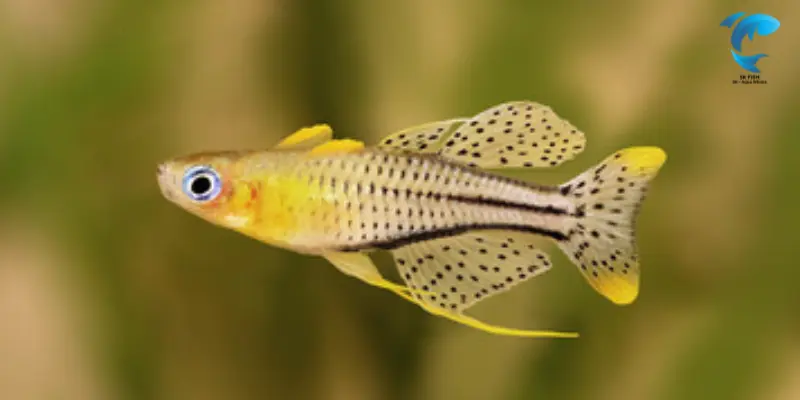
| Key Features |
|---|
|
Water Parameters
- Temperature: 72-82°F (22-28°C)
- pH: 7.0-8.5
- Hardness: Medium to hard
Diet
Omnivorous; quality flake foods, small pellets, frozen and live foods (daphnia, brine shrimp)
Why They’re Trending for 2025
These delicate-looking surface dwellers are gaining popularity for their unique appearance, featuring distinctive blue eyes and elegant, extended dorsal and anal fins that create a flowing display when they swim. As a rare nano fish in the hobby, they’re attracting attention from aquarists looking for something different in 2025. Their active swimming and flashing displays make them particularly eye-catching.
Compatibility
Best with a peaceful community of fish of similar size. Avoid aggressive or fin-nipping species.
Tank Setup
A well-planted aquarium with open swimming areas, especially near the surface. They appreciate slightly harder water and will show their best colours with good lighting. A tight-fitting lid is essential, as they can jump.
Sustainability Note: Increasingly available from specialized breeders, though still relatively uncommon in the hobby.
9. Rummynose Tetra (Hemigrammus rhodostomus)
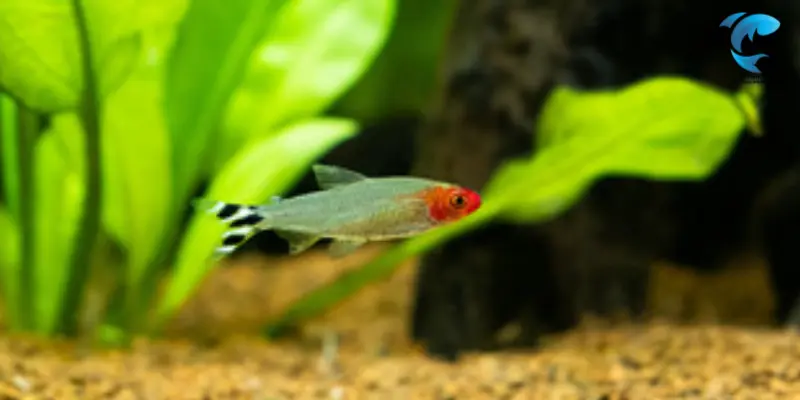
| Key Features |
|---|
|
Water Parameters
- Temperature: 75-82°F (24-28°C)
- pH: 6.0-7.0
- Hardness: Soft to medium
Diet
Omnivorous; quality flake and small pellet foods, frozen and live foods (bloodworms, brine shrimp, daphnia)
Why They’re Trending for 2025
Rummynose Tetras exhibit some of the tightest schooling behaviour among aquarium fish, creating spectacular coordinated displays as they move through the tank. Their distinctive bright red “nose,” combined with their zebra-striped tail fin, makes them visually striking. For 2025, they’re becoming popular with aquascapes and aquarists focused on creating natural biotope aquariums.
Compatibility
A Peaceful community fish that works well with other non-aggressive species. They’re excellent dither fish for shy tank mates.
Tank Setup
This is a Well-planted South American biotope with driftwood, leaf litter, and open swimming spaces. Slightly acidic water conditions help maintain their vibrant colours, especially the red “nose,” which can fade in poor water conditions.
Sustainability Note: Both wild-caught and captive-bred specimens are available. Look for captive-bred sources for more ethical purchasing.
10. Glass Catfish (Kryptopterus vitreous)
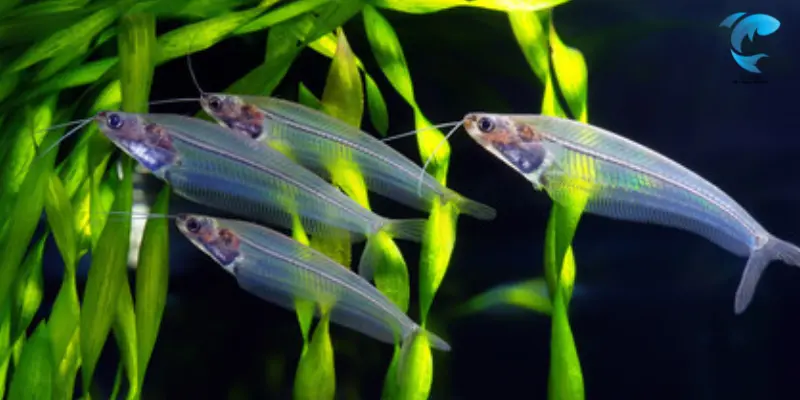
| Key Features |
|---|
|
Water Parameters:
- Temperature: 75-82°F (24-28°C)
- pH: 6.5-7.5
- Hardness: Soft to medium
Diet
Carnivorous; quality sinking pellets, frozen foods (bloodworms, brine shrimp, daphnia), and occasional live foods
Why They’re Trending for 2025
Glass Catfish offer one of the most unique appearances in the aquarium hobby with their transparent bodies that reveal their internal skeleton and organs. As aquarists seek increasingly distinctive species, these schooling catfish are becoming more popular for their conversation-starting looks and peaceful nature. Their transparent bodies make them particularly interesting under specialized lighting.
Compatibility
Peaceful community fish that do best with other gentle, non-aggressive species. Avoid boisterous or fin-nipping tank mates.
Tank Setup
A planted aquarium with subdued lighting and plenty of hiding places. They appreciate a gentle current but not a strong flow. The dark substrate and background help showcase their transparent bodies.
Sustainability Note: Both wild-caught and captive-bred specimens are available. Source captive-bred individuals when possible for sustainability.
Special Considerations for 2025
Sustainable and Ethical Sourcing
As environmental awareness grows in the aquarium hobby, 2025 sees an increased focus on sustainable and ethical fish sourcing. Consider these guidelines:
- Whenever possible, prioritize captive-bred specimens, as they reduce pressure on wild populations and often adapt better to aquarium life.
- Research the origin of wild-caught species to ensure they come from sustainable collection operations that employ humane capture methods and support local communities.
- Avoid endangered or threatened species that may be adversely affected by collection for the aquarium trade.
- Support retailers who provide transparent information about where and how their fish are sourced.
“If the pet shop isn’t sure or won’t offer you any insight into this question, avoid them and find a more reputable place to source your fish. Small independent fish stores should know exactly where their fish are coming from and often tend to care much more about the animal’s welfare than major chain brands.” Mongabay
Aquascaping and Natural Biotopes
For 2025, the trend continues toward creating natural-looking environments that mimic the fish’s native habitats:
- Research your chosen species’ natural environment and try to recreate similar conditions in your aquarium.
- Use appropriate live plants that complement the geographical origin of your fish.
- Consider the swimming patterns of your schooling species when designing the aquascape to provide adequate open areas for movement.
- Balance aesthetics with functionality by providing visual appeal and the necessary environmental conditions for your fish to thrive.

Technology Integration
Innovative aquarium technology is becoming increasingly accessible in 2025:
- Automated water testing and dosing systems help maintain consistent water parameters.
- Programmable LED lighting can simulate natural light cycles and enhance fish colours.
- Innovative feeding systems ensure consistent nutrition even when you’re away.
- Remote monitoring capabilities allow you to check on your aquarium from anywhere.
Creating a Successful Schooling Fish Community
Proper Group Sizes
For truly natural behaviour, maintain adequate group sizes:
- A minimum of 6-8 individuals for most species, but larger groups (10- 15+) create more impressive displays
- Observe how your fish behave – if they seem skittish or scattered, consider adding more to the school
- Factor in tank size when determining the maximum school size
Compatible Tank Mates
When selecting companions for your schooling fish:
- Match temperaments – choose peaceful species that won’t harass your schoolers
- Consider swimming zones – combine bottom, middle, and top-dwelling species
- Watch size ratios – avoid species large enough to view schooling fish as food
- Respect territory needs – some species need defined spaces despite being sociable
Feeding Strategies
To ensure all fish get adequate nutrition:
- Diversify feeding locations – surface, mid-water, and bottom feedings
- Vary food types – flakes, pellets, frozen, and live foods
- Consider feeding frequency – smaller, more frequent meals for smaller species
- Observe feeding behaviours – ensure timid species aren’t out-competed

Conclusion
The best freshwater schooling fish for 2025 blends visual appeal, interesting behaviour, and manageable care requirements. By selecting species matching your experience level and aquarium setup, you can create a dynamic, engaging display showcasing the coordinated fish movements’ natural beauty.
Remember that proper research, ethical sourcing, and commitment to appropriate care are the foundations of successful aquarium keeping. With these stunning schooling species and the right approach, your 2025 aquarium will be a thriving ecosystem and a captivating centrepiece in your home.
Whether you’re drawn to the intense red of Chili Rasboras, the coordinated movements of Rummynose Tetras, or the transparent wonder of Glass Catfish, there’s a schooling species perfect for your aquatic vision in 2025.
FAQ: Top 10 Best Freshwater Schooling Fish for 2025
Schooling fish add a unique, dynamic quality to your aquarium. They thrive in groups, creating a mesmerizing display as they move together in synchronized patterns. Keeping schooling fish not only enhances the beauty of your tank but also helps improve their well-being. These fish feel safer and less stressed in groups, as it mimics their natural behavior in the wild. Additionally, schooling fish can be excellent companions for other non-aggressive tank mates, fostering a peaceful and harmonious environment that brings a sense of calm and reassurance.
The minimum group size varies depending on the species, but generally, schooling fish feel most comfortable in groups of at least 5 to 10 individuals. For some species, like the neon tetra or the zebra danio, the more fish you have, the better they will behave and interact. Keeping too few can lead to stress and health issues, as these fish rely on the safety and social interaction provided by their school. A larger school also encourages more natural behaviors, like foraging and swimming together.
Yes, you can mix different species of schooling fish as long as they share similar water temperature, pH, and tank size requirements. However, it’s essential to consider the temperament of each species. For example, peaceful species like neon tetras or guppies tend to do well with each other, while more territorial schooling fish, such as some species of barbs, may not always be compatible. It’s a good idea to research the specific care requirements of each species before introducing them into the same tank to ensure they can cohabit peacefully.
Schooling fish prefer well-planted aquariums with plenty of hiding spots and swimming space. They enjoy tanks with flowing water, mimicking the currents of their natural habitats. Adding live plants, caves, and rocks helps provide a natural environment that reduces stress. A tank with a gentle filter and dim lighting is ideal, as schooling fish tend to shy away from bright, direct lighting. A spacious tank is essential—aim for a minimum of 20 gallons if you’re keeping multiple schooling fish species.
Caring for freshwater schooling fish is relatively simple but requires attention to detail. It’s a responsibility that comes with the joy of keeping these beautiful creatures. Ensure that the water is filtered correctly and maintained at the right temperature, usually between 72°F and 78°F (22°C to 26°C), depending on the species. Regular water changes (around 20% of the tank volume every 1-2 weeks) are crucial to maintain water quality. Provide a balanced diet with high-quality flakes or pellets and occasional live or frozen foods like brine shrimp or daphnia. Monitor the tank for signs of illness, and ensure your schooling fish are always kept in appropriate groups for their well-being.
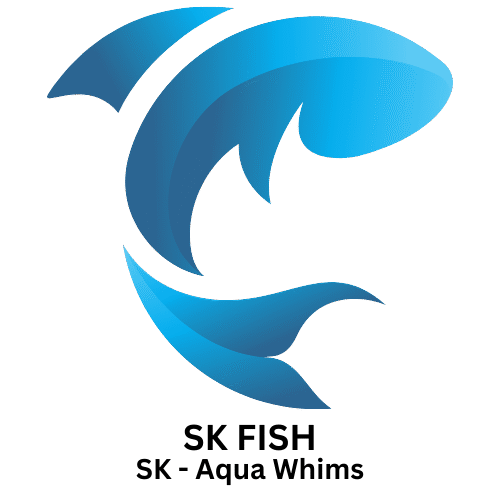
SK Fish is your trusted source for practical fish care tips and delicious seafood recipes. Our team is dedicated to providing reliable, well-researched content for fishing enthusiasts and home cooks alike.

- Be Respectful
- Stay Relevant
- Stay Positive
- True Feedback
- Encourage Discussion
- Avoid Spamming
- No Fake News
- Don't Copy-Paste
- No Personal Attacks



- Be Respectful
- Stay Relevant
- Stay Positive
- True Feedback
- Encourage Discussion
- Avoid Spamming
- No Fake News
- Don't Copy-Paste
- No Personal Attacks


